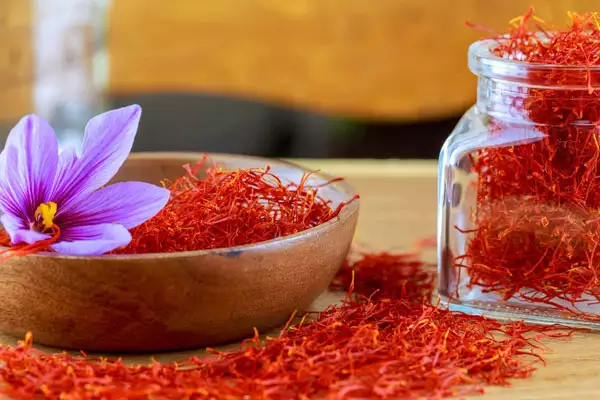Saffron farmers in Jammu and Kashmir have switched to apple and mustard plantations due to unpredictable weather patterns, including a prolonged dry spell and heatwaves.
About Saffron:
- Saffron is extracted from the fragrant stigmata of Crocus flowers and is one of the most expensive spices globally, needing 75,000 flowers to produce just one ounce.
- It contains aromatic essential oil croncin and the colouring principle crocerin (yellow).
- Historically, saffron cultivation in Kashmir was introduced by Central Asian immigrants around the 1st Century BCE.
- This spice is deeply intertwined with Kashmiri culture, reflecting its rich heritage and is often referred to as ‘bahukam’ in ancient Sanskrit literature.
Ideal agronomic conditions for growing saffron include:
- A sub-temperate climate with an altitude ranging from 1500 to 2250 meters.
- It flourishes in calcareous, humus-rich, well-drained loamy soil with a pH between 6 and 8.
- Required annual rainfall is 1000-1500 mm, although the region traditionally receives about 30-40 cm. The area should remain covered with snow in winter.
- A photoperiod (sunlight) of 12 hours is essential, and it can tolerate summer temperatures not exceeding 35 to 40 degrees Celsius and winter temperatures down to about –15 to –20 degrees Celsius.
Cultural and Economic Importance:
- Beyond its use in cuisine, saffron is valued for its health rejuvenation properties and is used in cosmetics and medicinal products.
Seasons and Conditions of Cultivation:
- Saffron corms (seeds) are generally planted in June and July, and in some areas during August and September.
- The flowering phase begins in October.
Ref: Source
| UPSC IAS Preparation Resources | |
| Current Affairs Analysis | Topperspedia |
| GS Shots | Simply Explained |
| Daily Flash Cards | Daily Quiz |
Frequently Asked Question:
What is saffron and why is it so expensive?
Saffron is a spice derived from the stigmas of the Crocus flower, requiring about 75,000 flowers to produce just one ounce, making it one of the most valuable spices due to its labour-intensive harvesting process.
Where is saffron primarily cultivated in India?
Saffron is primarily grown in the Karewa highlands of Jammu and Kashmir.
What are the ideal growing conditions for saffron?
Saffron thrives in a sub-temperate climate, well-drained loamy soil with a pH of 6 to 8, and an altitude of 1500 to 2250 meters, requiring both a specific photoperiod and a considerable amount of rainfall.


